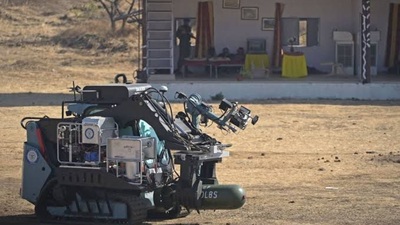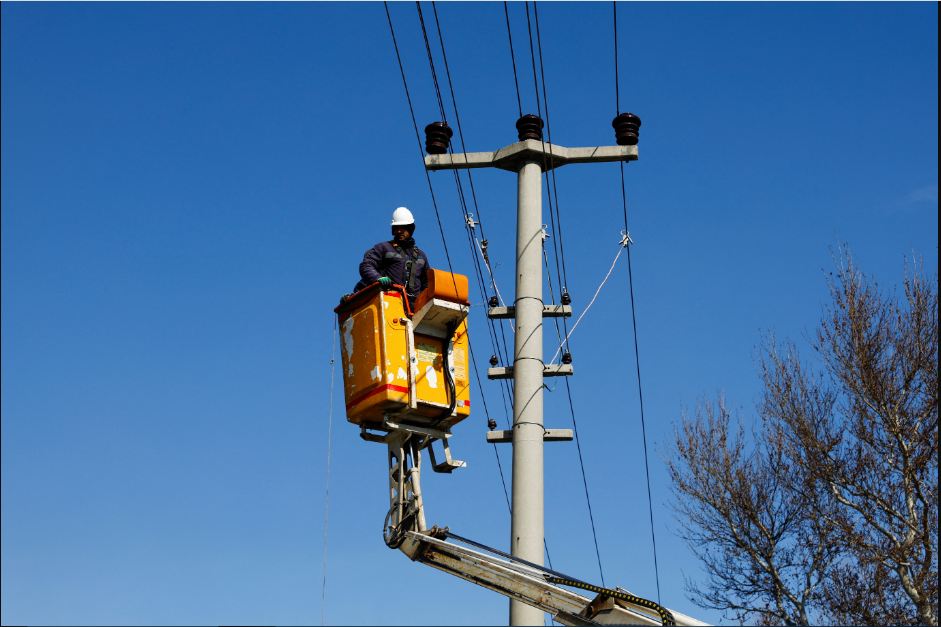India Strengthens Defence Innovation with DRDO’s New Unexploded Ordnance Robot Partnership
New Delhi – India has taken a major step forward in advancing defence automation and operational safety with the Defence Research and Development Organisation (DRDO) finalising a technology transfer agreement with Pune-based Sagar Defence Engineering for the production of its cutting-edge unexploded ordnance handling robot (UXOR).
The partnership marks a significant milestone in India’s ongoing efforts to modernise its defence capabilities and promote technological self-reliance under the Make in India initiative.
Sagar Defence Engineering, alongside Bharat Electronics Limited (BEL), will serve as one of DRDO’s key industrial partners to scale up the production of UXOR units for deployment across the Indian Air Force (IAF).
Enhancing Safety and Precision in Defence Operations
The UXOR system represents a breakthrough in the field of autonomous and semi-autonomous bomb disposal technology. Designed to neutralise explosive devices weighing up to 1,000 kilograms, the robot combines advanced engineering and artificial intelligence to carry out delicate and high-risk tasks with precision.
Developed indigenously by DRDO over the past decade, UXOR is equipped with high-powered water jet cutting tools capable of slicing through bomb casings up to 25 millimetres thick.
The system can be remotely operated from a safe distance of up to two kilometres, significantly reducing the risk to personnel during unexploded ordnance handling and disposal.
According to defence experts, the introduction of UXOR is expected to enhance operational safety across forward airbases, strategic installations, and sensitive conflict zones.
Its cross-terrain mobility allows it to function efficiently on diverse surfaces such as airstrips, tarmacs, and rugged terrain, while its ability to perform continuous six-hour missions makes it suitable for extended disposal or reconnaissance tasks.
Successful Field Trials and IAF Integration
Sources familiar with the project have confirmed that UXOR has undergone extensive testing with the Indian Air Force, including simulated bomb disposal drills and live field trials in secure environments.
The system reportedly exceeded expectations in precision handling, situational awareness, and reliability under challenging conditions.
The integration of UXOR into IAF operations aligns with global defence trends where advanced robotics and remote systems are increasingly used to enhance human safety and mission effectiveness.
Similar systems are deployed by defence forces in the United States, the United Kingdom, and Israel, making India’s UXOR an important addition to this growing technological ecosystem.
Expanding Public-Private Collaboration
Under the Technology Transfer (ToT) agreement, DRDO will provide Sagar Defence Engineering and BEL with comprehensive access to UXOR’s design documentation, manufacturing processes, software integration frameworks, and quality assurance protocols.
This collaboration reflects a strategic shift within DRDO — from traditional in-house production to a more inclusive partnership model that leverages the strengths of both public and private sectors.
A senior defence official noted that such partnerships are key to accelerating the deployment of advanced technologies, fostering innovation, and strengthening India’s defence industrial base.
“By engaging dynamic private companies, we are able to scale faster and bring cutting-edge systems like UXOR into operational service much sooner,” the official said.
The production contract includes delivery of multiple UXOR units over the next two fiscal years, comprehensive training for IAF personnel in operation and maintenance, and field support during initial deployment.
Analysts view the UXOR programme as a reflection of India’s growing role in global defence innovation. With a focus on indigenous research and strategic partnerships, India is positioning itself not just as a major consumer of defence technology, but as a contributor to the international defence ecosystem.
The successful rollout of UXOR demonstrates how technological collaboration, innovation, and safety-focused design can advance both national security and industrial capability — signaling India’s readiness to compete and collaborate on a global scale.



